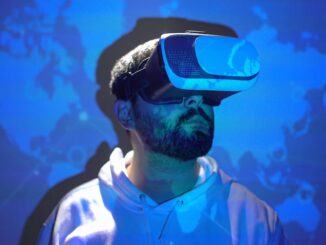

Health technology startups have always been a sector of interest for investors. From medical research to digital health solutions, the sector is booming these days. And it’s not just about individual startups. While many of these companies are still in the early stages of their lifecycles, others have already reached a wider audience and have a bigger impact on the industry. With health technology startups becoming more popular and successful, it’s no wonder it’s now the fastest-growing technology sector in the United States. This article will explore how health technology startups are changing the world and how they’re poised to grow even further in the future.
- New Technologies are Being Developed for Cancer Patients
Innovations in cancer treatment have greatly improved cancer patients’ life expectancy and quality of life. With new technologies being developed every year, such as robotic surgery systems and virtual reality-based training programs, it’s no wonder that cancer patients are more comfortable undergoing treatment today than they were decades ago. One of the most promising developments in next-generation sequencing (NGS). NGS works by sequencing a patient’s entire genome and comparing it to a reference genome sequence of a healthy individual. This has led to researchers developing better diagnostic tests and treatments for cancer patients who have genetic abnormalities that aren’t readily visible on standard medical imaging tests or scans.
- Wearable Health Tracking Devices
Wearable health tracking devices are already being used by people who want to monitor their health conditions or track their weight loss progress over time. From fitness trackers that keep tabs on your heart rate and blood pressure levels to devices that track calorie intake and activity levels, wearable technology is paving the way to understand people’s health and fitness better. One of the most popular types of wearable technology is smartwatches. For example, Fitbit has developed several smartwatches designed to track users’ physical activity levels, heart rate, and sleep patterns. People with diabetes could use this type of technology to monitor their condition and patients with chronic conditions to track their progress.
- Virtual Reality-Based Training Programs
Virtual reality (VR) has become increasingly popular in the health sector in recent years. One reason is that VR allows users to experience medical procedures or treatments from various perspectives, which can help patients understand what they’re experiencing during treatment. Another reason why VR is gaining popularity in the health sector is that it can be used to help train medical professionals in new procedures or treatments so that they have a better understanding of how they should perform them when treating patients in real-life situations. For example, Johns Hopkins University has developed a virtual reality-based training program called “Virtually Better Surgery” that allows trainees to perform laparoscopic surgery on virtual patients with different types of illness and injuries before performing the procedure on patients at Johns Hopkins Hospital in Baltimore, Maryland.














Leave a Reply
Be the First to Comment!
You must be logged in to post a comment.
You must be logged in to post a comment.